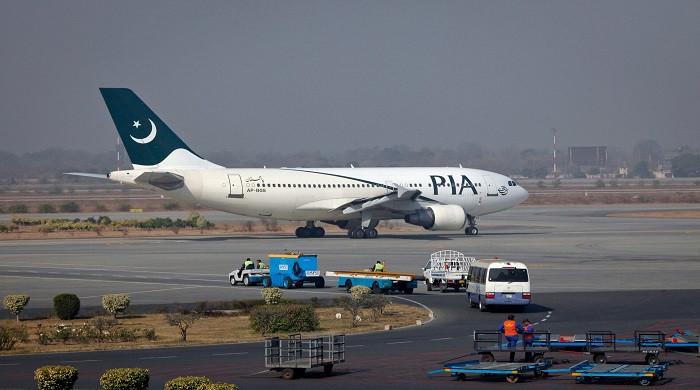Current account deficit shrinks 73 percent in July-November
Current account deficit reduced to $1.821 billion in July-November FY20 from $6.733 billion a year earlier
December 20, 2019

KARACHI: Current account deficit shrank 73 per cent in the first five months of the current fiscal year, while exports posted a marginal growth, the State Bank of Pakistan (SBP) said on Thursday.
The current account deficit reduced to $1.821 billion in July-November FY20, from $6.733 billion a year earlier, the SBP said.
The turnaround was largely due to the fall in imports that has accompanied sharp slowdown in growth after the currency devaluation and a gradual increase in interest rates, which sent shockwaves through the economy.
The five months’ current account deficit was equivalent to 1.6 per cent of the gross domestic product (GDP). It stood at 5.3 per cent in the same period last year.
Current account balance, however, ran into deficit in November after a surplus in the previous month. Pakistan posted a current account deficit of $319 million in November versus the surplus of $70 million in October this year.
Stagnant growth in imports and some decrease in exports led to a shortfall in November’s current account. Exports declined by 3.6 per cent to $2.11 billion in the last month.
Imports of goods in the period under review in terms of value were $3.648 billion, compared to $3.632 billion in the corresponding period last year.
Analysts say the improvement in the July-November current account deficit was driven by falling imports, slight growth in exports, weak domestic demand, and rising foreign investment.
Goods imports fell 21.1 per cent to $18.311 billion, while exports rose 4.7 per cent to $10.309 billion.
Direct foreign investment into Pakistan also surged 78 per cent to $849 million in July-November FY20, while portfolio flows stood at $1.2 billion.
Large Scale Manufacturing index declined eight per cent in October.
Analysts say the current account deficit can be financed easily this fiscal year. Total external financing requirement in the current fiscal year is likely to be $16.5 billion. The government could require $10 billion to service its foreign debt.
The current account deficit is expected to be $6 billion to $6.5 billion in FY20. The SBP has improved its foreign exchange buffers due to reduction in its swaps and forward liabilities and higher foreign inflows.
The central bank-held reserves rose to $10,892 billion as of December 13 from $9.233 billion a week earlier due to multilateral and other official inflows including proceeds of $1.3 billion received from Asian Development Bank.
Originally published in The News











